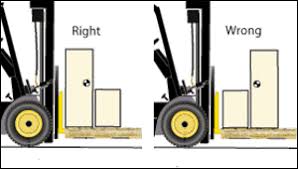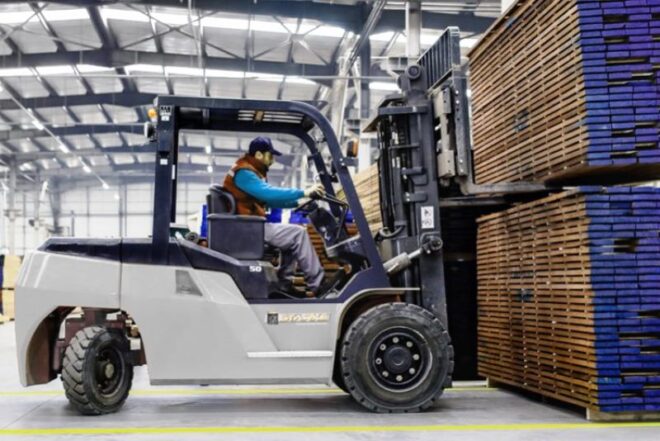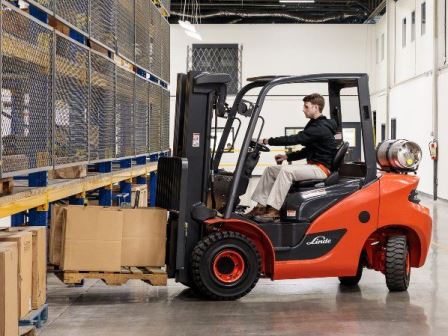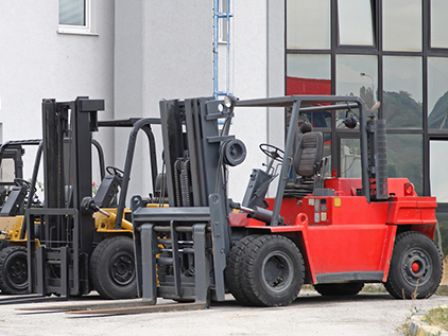One of the frequently asked questions is: as the load center on the forklift increases the weight capacity does what?
Any discussion of the basics of forklift trucks would be incomplete without a discussion of the center of gravity and the stability triangle.
One of the hardest things for lift truck operators to learn during training is how to maintain their center of gravity within their stability triangle.

Forklift load center
A forklift has a three-point suspension system. The points are found over both of the two load (front) wheels and midway between the rear wheels. When imaginary lines are drawn to connect them, what’s known as the stability triangle is formed.
The operator must ensure that the center of gravity of the combined forklift and load remains within the stability triangle to guard against tipping over.

Rated capacity forklift
If the load is off-center, improperly distributed, or oversized, it may exceed capacity and unbalance the forklift.
The weight capacity of a forklift attachment is tied to what is known as the Maximum Load Moment, which is when the load center distance increases, changing the weight distribution, and as a result, the amount of weight a truck can carry under those conditions.
If your load center is farther out than the load center for maximum lift capacity for your forklift, then your maximum lifting capacity is reduced, potentially dramatically. The load center distance is measured from the load bracket to the center of the load.

Forklift load center chart
Check the weight of the load
The rated lifting capacity of the forklift is the maximum weight of the cargo allowed to lift in the distance from the center of gravity of the cargo to the front wall of the fork not greater than the center distance of the load, expressed in t (tons). industrial lift truck, the lifting capacity should be reduced by a safety factor of at least 20 percent to allow.
Forklift operating safety
When working, stability can be best maintained by keeping loads low to the ground and traveling with caution when turning, stopping, and starting. Also, be sure to wear your seatbelt.
One area of particular concern is on ramps, slopes, or otherwise uneven terrain. Never raise a load or turn on an uneven surface. In such cases, your center of gravity will quickly move outside of the stability triangle.
While traveling empty on a ramp, your forks should always point downhill. When carrying a load, your forks should always point toward the top of the ramp, so the load will not fall off.
The load center is the distance from the face of the forks to the load’s center of gravity. Many forklifts are rated using a 24-inch load center, which means that the load’s center of gravity must be 24 inches or less from the face of the forks.
As you push the load center out, the effort, or capacity required to lift the weight increases. It is for this reason that sometimes a greater capacity truck is required to lift a specific item, due to its dimensions rather than weight.
The most read

When operating a powered industrial truck it is essential that you …
Essential rules when operating, driving, and maneuvering powered industrial trucks

Powered Industrial Truck
- What qualifies as a powered industrial truck?
- What is a powered industrial truck?

Forklift Safety Procedures
Forklifts are extremely useful workplace vehicles, as long as they are used safely and appropriately by operators who are appropriately trained and competent to use them. Learn about the rules for driving forklifts.
